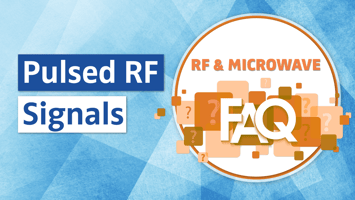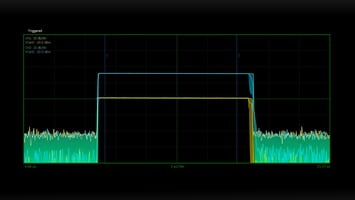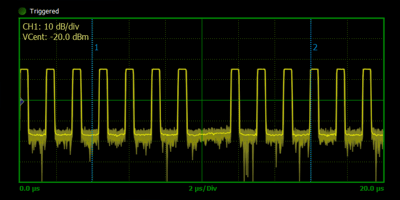Applications such as radar and communication systems rely on the control and manipulation of...
Measuring Pulsed RF Signals? Here's How to Get Essential Pulsed Power Measurements Instantly
Pulsed signals are used in various applications, such as radar and wireless communications. Using Boonton test equipment, various parameters that validate pulse shape, timing, and power are captured immediately at the start of testing.
Discover more about the automatic pulse measurements from Boonton in the post below.
Stay on the Pulse with Automatic Measurements
The Boonton RTP5000 Series are peak USB power sensors that deliver real-time results. Operating at a fast-paced speed of 100,000 measurements per second, the RTP5000 Series works alongside an advanced measurement and analysis software referred to as the Boonton Power Analyzer. It enables control of the RTP family of Boonton power sensors, measurement configuration, signal capture, and industry-leading RF signal analysis.
Among many key features (statistical analysis with CCDF plots, measurement markers, simultaneous power measurement channels, etc.), the RTP5000 Series and Boonton Power Analyzer together can provide 16 automated pulse measurements.
These automatic pulse measurements include rise time, fall time, period, pulse width, off-time, pulse repetition frequency (PRF), duty cycle, peak power, pulse power, average power, overshoot, droop, pulse top amplitude, pulse bottom power, edge delay, and skew.
Need a refresher on the definition of all the pulse measurements listed? The “Pulsed Power Measurements” article from Boonton is a great reference guide for a brief rundown of essential measurements for pulsed signals.
RTP’s automated pulse measurements are complemented by the performance to measure fast rise-time, narrow pulses. RTP5000 sensors have a rise-time as fast as 3 ns, a real-time sample rate of 100 MSa/s and an effective sample rate of 10 GSa/s. When coupled with a 100-picosecond time base resolution, the RTP5000 Series can provide 50 points per division with a time base range as low as 5 nanoseconds per division making it easy to capture and analyze signals with pulse widths as narrow as 10 nanoseconds.
The video below shows how easy it is to make a comprehensive set of pulse measurements using the RTP5000 Series and Boonton Power Analyzer. The setup is simple, including a PC that is running the software, an RTP5000 Series Real-time USB Peak Power Sensor, and a 1 GHz RF source DUT that provides a 50-nanosecond wide pulse with a 100-microsecond period.
As the video depicts, the sensors can connect to a PC loaded with the Boonton Power Analyzer for pulsed power measurements. If a benchtop experience is preferred, the sensors can also work with the Boonton PMX40 RF Power Meter. Among its various measurement modes, the PMX40's "Pulsed Mode Analysis" provides the 16 automatic parameters for pulsed waveforms.
Learn More
For pulsed power measurements, what's the relevance between “video bandwidth,” “continuous sample rate,” and “effective sample rate?"
The answer can be found in the article, "Key considerations for RF power measurement equipment," by Bob Buxton, Product Manager at Boonton. It's part of a collection of great T&M content, which together form EE World's Test and Measurement Handbook.
 Secondary surveillance radar (SSR) utilizes pulsed signals for air traffic control (ATC) purposes. The “dB or not dB” blog features a post on SSR basics and how Boonton test instruments mark the future of radar signal analysis.
Secondary surveillance radar (SSR) utilizes pulsed signals for air traffic control (ATC) purposes. The “dB or not dB” blog features a post on SSR basics and how Boonton test instruments mark the future of radar signal analysis.



